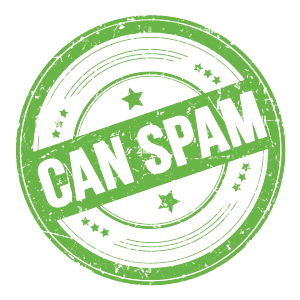The 9 Strategies for Crafting a Personalized Email Campaign
Email marketing is an essential business tool for promoting your products and services globally, connecting with industry professionals without costly ads. Effective campaigns require personalized and responsive emails to target clients effectively. Responsive emails ensure accessibility and visual appeal on any device, keeping you ahead of competitors.
Personalized and responsive email marketing enhances audience engagement, tracks B2B content effectiveness, and drives higher conversions and returns. But with so many businesses using email marketing, how can yours stand out? This blog will guide you through the 9 steps to creating a responsive email marketing campaign to achieve your business goals.
Here’s an overview of the major topics:
- Defining your marketing goals
- Know your target audience.
- Segment your contact list.
- Create compelling content.
- Use engaging subject lines.
- Design a responsive email design.
- Enhance mobile optimization.
- Automate your email campaigns.
- Test, analyze, and refine your content.
By the end of this article, you’ll have all the information you need to develop an effective email marketing campaign for your business.
9 Steps to Creating a Responsive Email Marketing Campaign
1) Define your marketing goals.
Before launching your email marketing campaign, you must define your email marketing goals. Once you know what you want to accomplish, you can set measurable targets and objectives. Your email marketing should be aligned with your overall business-to-business operations.
To increase sales, your marketing campaign should focus on gathering more leads and driving conversions. It requires specific, measurable, achievable, relevant, and time-bound (SMART) goals to ensure effective tracking and success.
If you are uncertain about your goals, review your past email campaigns to see what worked well. You can also check your customers’ feedback to incorporate their preferences. Once you understand your goals, you can begin planning your email marketing strategy.
2) Know your target audience.
When you’re ready to start your email marketing campaign, research your target email list. This means identifying potential customers who are interested in your services. You can either buy an email list from a trusted source or build your own using tools or scraping websites.
As OptinMonster stated, over 59% of customers base their purchasing decisions on personalized emails they receive. Therefore, it is essential to know your audience and send tailored content according to their preferences to enhance your email marketing campaigns.
Additionally, get clear consent from subscribers before sending marketing emails. Make sure your sign-up forms and data collection follow GDPR and CAN-SPAM Act rules.
3) Segment your contact list.
Once you have a consolidated email list of your potential customers, you can start with your business promotions. But before you do that, there’s one more important step: audience segmentation. Segmenting your email list allows you to send more targeted, relevant emails to your subscribers.
You can segment your list by geographic location, age, or interests. This ensures that each subscriber receives content based on their requirements, which increases the likelihood that they’ll engage with your campaign. However, 77% of email marketing returns are generated from segmented and targeted campaigns.
4) Create compelling content.
Email marketing personalization includes customizing content based on customer personas. To achieve your desired results, your email content must be compelling, engaging, and informative. This approach helps increase brand awareness, drive website traffic, and promote your products or services.
Moreover, email marketing campaigns typically have an average open rate of around 36.5%. To increase your outreach, it is essential to frequently optimize your content by following current B2B marketing trends and analyzing recipient engagement.
Start by understanding your audience: their needs, wants, and the type of information they require to make a purchasing decision. Once you have this understanding, you can begin creating content that is both relevant and useful to them.
5) Use engaging subject lines.
Most importantly, your email content should also be well-written and free of errors. Be sure to proofread your content before sending it out to your list. Additionally, use less technical jargon or industry-specific language that your audience may not be familiar with. Keep your language simple and easy to understand.
Finally, make sure your email content is visually appealing. Use images, infographics, and videos to break up large blocks of text and add visual interest. Ultimately, by following these valuable tips, you can create compelling email content to engage and convert your audience.
6) Design a responsive email design.
When designing an engaging email template, it’s important to follow suitable practices to ensure effectiveness and compatibility. Here’s a more detailed and standard set of guidelines:
- Ensure template design: Your email template should be responsive, adjusting to fit any screen size to improve your customer experience across all platforms.
- Enhance visual appeal: It should be visually appealing and easy to navigate by using high-quality images, graphics, and balanced text.
- Improve compatibility: Your template should be compatible with all major email clients and devices to ensure consistent performance.
- Add a clear call-to-action: Ensure your email template includes a call-to-action (CTA) that encourages recipients to take the desired action.
- Test email accuracy: Finally, upload your HTML file to your email service provider (ESP) and send yourself a test email to ensure everything looks good.
7) Enhance mobile optimization.
Mobile-friendly emails are the most efficient way to connect with your target audience on any device. They promote easy accessibility and improve user engagement, ensuring your message effectively reaches clients. This strategic approach benefits your email campaigns by generating more leads and increasing conversions.
According to WebFX, 8.41% of email views and 75% of Gmail views are generated by mobile devices. Therefore, it is important to optimize for mobile-friendly advertisements to build a responsive email campaign.
8) Automate your email campaigns.
Leveraging email marketing tools can increase the delivery and accuracy of your personalized email marketing campaigns. They can assist you in streamlining your messages and ensuring they are sent on time based on user preferences.
There are some popular email automation platforms, such as Mailchimp, HubSpot, ActiveCampaign, and more. They are involved in CRM integration, SMS marketing, A/B testing, advanced segmentation, and other email marketing services. So, choose the best platform to upscale your marketing standards.
9) Test, analyze, and refine your content.
The only way to know if your email campaign is truly effective is to test, analyze, and refine it on an ongoing basis. Pay close attention to your open and click-through rates and any feedback you receive from recipients. Use this data to fine-tune your dynamic email content and design and ensure you always provide value to your subscribers.
It’s also important to keep an eye on your unsubscribe rate. If this increases, it could signal that you are bombarding your list with too many emails or that your content is no longer relevant to them. Either way, taking action quickly is important to maintain a healthy list of engaged subscribers.
Conclusion
These 9 steps to creating a responsive email marketing campaign are just a preview. To improve your marketing outreach, you should stay updated with current industry trends. When it comes to email marketing, there is no one-size-fits-all solution. The best way to create a successful email campaign is to tailor it to your business goals and target audience. By taking the time to research your target list, create compelling content, and design an engaging email template, you can ensure that your email campaign will be a success.
So, to get a wide approach to your target audience, find a prominent email database like OriginLists, which can assist you in segmenting your database, generating potential leads, enhancing brand value, and increasing sales and returns on investment.


